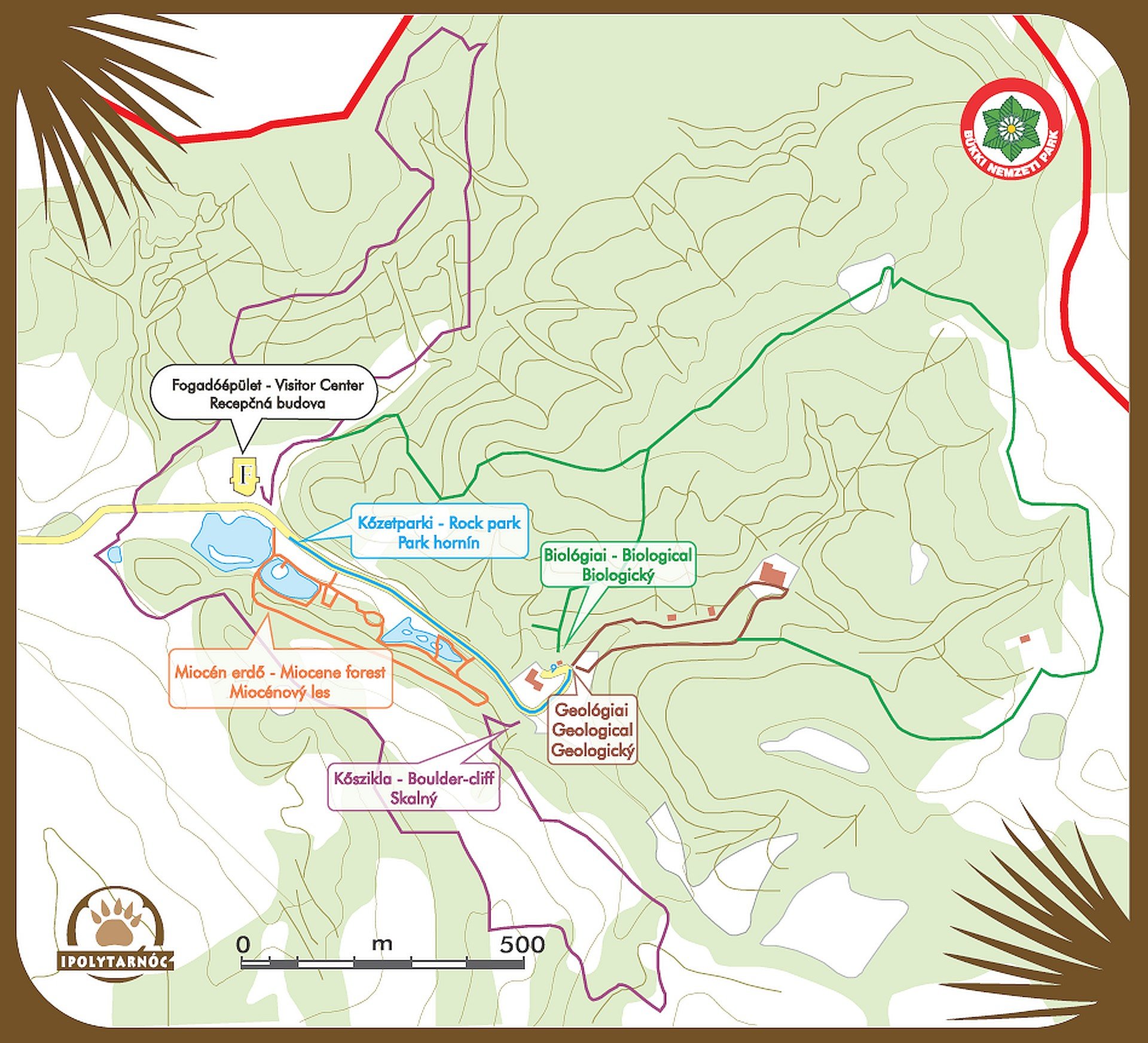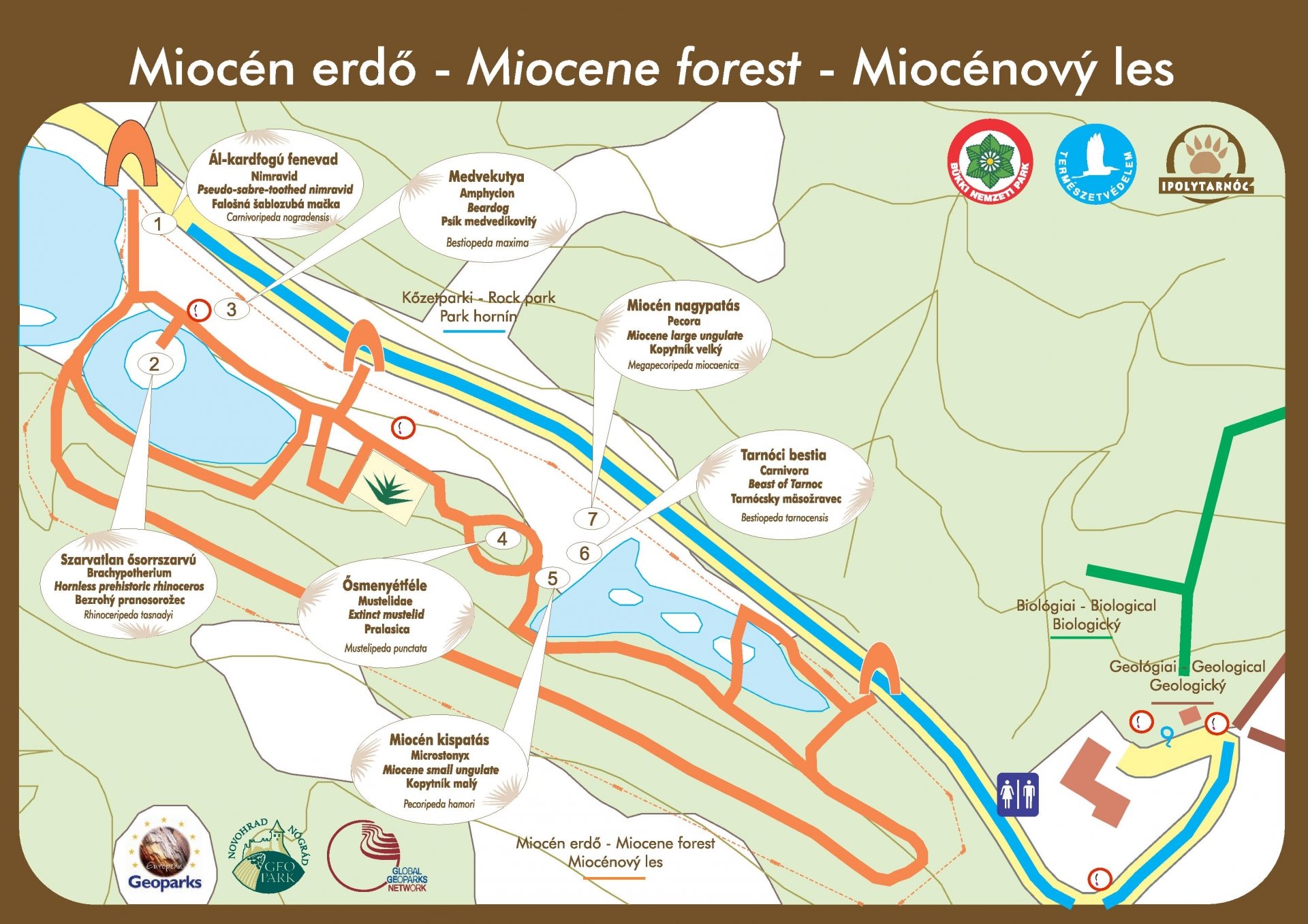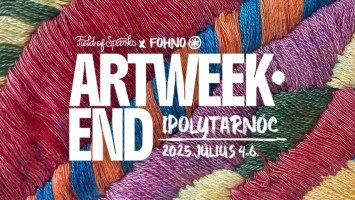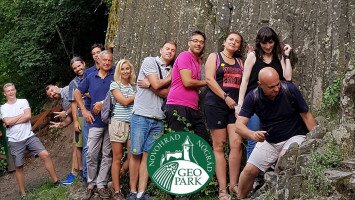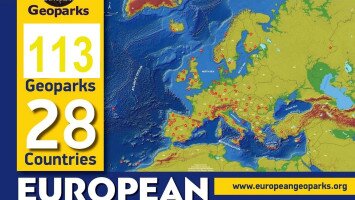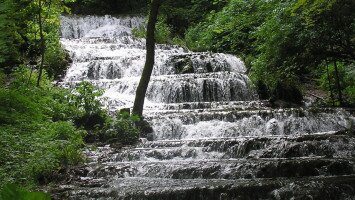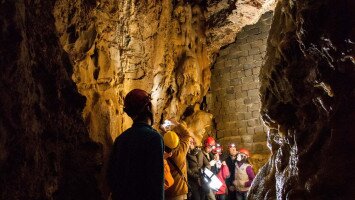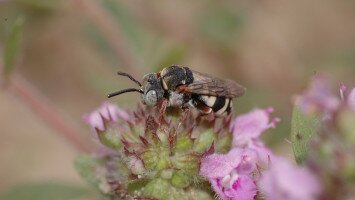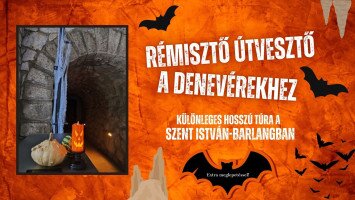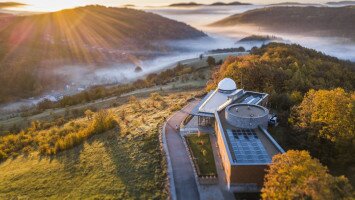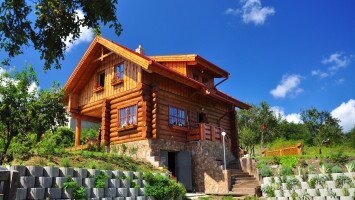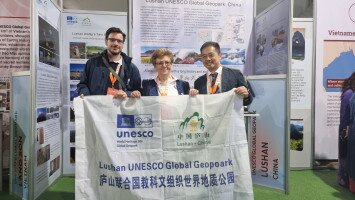
Az Ipolytarnóci Ősmaradványok tanösvényei
A terület túraúthálózata a geológiai tanösvényhez illeszkedő kőzetparki, biológiai, kőszikla és miocén-erdő ösvényekből épül fel. Ez utóbbiak a nyitvatartási időn belül, sétálójeggyel szabadon, túravezetés nélkül látogathatók. A parkoló mellett induló lombkorona ösvényt kiegészítő jeggyel lehet megtekinteni.
A tanösvények megállóhelyein kihelyezett QR kódok beolvasásával az előzetesen letöltött Guide@Hand program és a megfelelő nyomvonal megnyitásával okostelefonon, offline extra tartalommal, a látogatók magyar, szlovák és angol nyelveken is hozzá tudnak férni az információkhoz. A program és a hozzá tartozó tanösvények anyagai a fogadóépületben ingyenes wifi használattal is letölthetők.
A kőszikla és biológiai ösvények megtekintése zárt, lábszárat is fedő ruházatban és megfelelő terepi lábbeli viselésével ajánlott, kullancsveszélyes területünk. Kérjük, vigyázzák értékeinket. A tájékozódást magyar – angol nyelvű információk segítik.
Biológiai ösvények
A Geológiai ösvény bejárata mellől induló és a Fogadóépületig vezető biológiai sétányok kellemes kikapcsolódás ígéretével ismertetik a terület élővilágát. A 2 ill. 4 km hosszúságú erdei ösvényeket pihenőhelyek, kilátó és a helyi kőbányászkodás tájba simuló emlékhelyei színesítik.(Bejárásuk esős időben kevésbé ajánlott.) A biológiai tanösvény applikációs anyaga itt tölthető le.
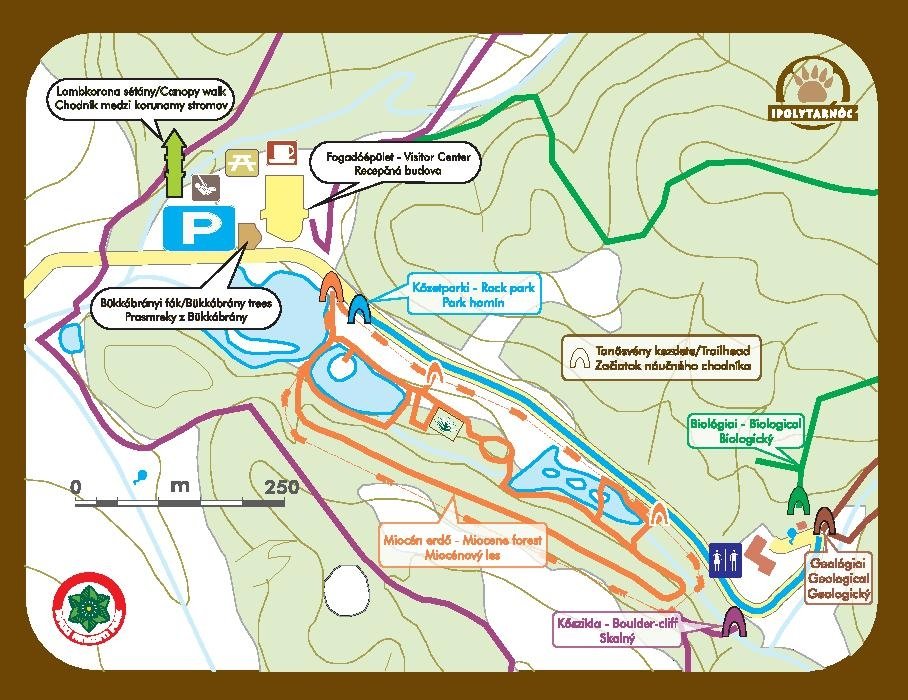
Geológiai tanösvény
Egy ősi tenger, a Paratethys fenekétől – egy folyóparti, szubtrópusi esőerdő övezetén keresztül – a vulkánok tetejéig ívelő időutazás révén csöppen a látogató a történelem előtti múltba. A példásan akadálymentesített, 800 m hosszú körút utcai cipőben, esős időben is bonyodalom nélkül bejárható. A tanösvény kiállításai magyar-angol nyelvűek. Legfontosabb ősmaradványai a cápafogak, kövesedett fák, levéllenyomatok és az ősállati lábnyomok. A lábnyomos homokkövet két csarnok és egy védőpince rész mutatja be, a legújabb, folyamatban levő feltárások belső terét ideiglenes, faszerkezetű épület védi.
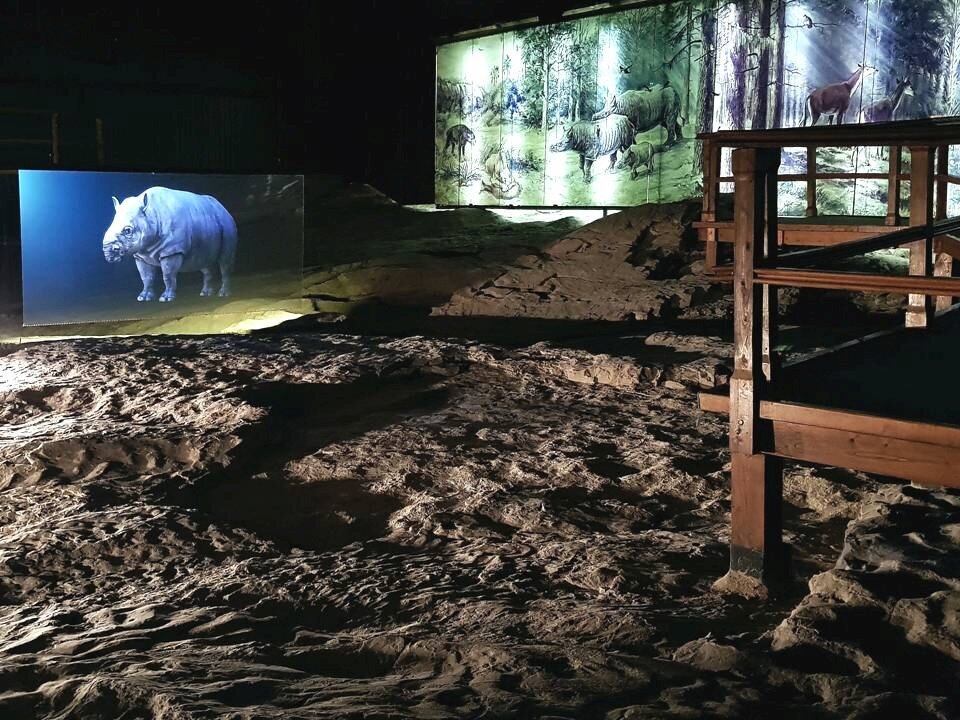
A nagycsarnok kiállítása világszínvonalú, a terület ősmaradványai mellett az egyéb európai – és magyar lábnyomos lelőhelyek ismertetésére is kitér. Az egykori vegetációt egy ősnövénysarok rekonstrukciója teszi szemléletessé, a lábnyomok alapján rekonstruált állatok pedig holografikus kivetítés segítségével elevenednek meg. A geológiai tanösvény applikációs anyaga itt tölthető le.
A vezetett túrák indulási időpontjai a csak szakvezetéssel látogatható geológiai ösvényen:
III-V. és IX-X. hónapokban keddtől vasárnapig és ünnepnapokon, 9.30 – 15.30 óra között, minden óra harminc perckor, nyáron 4 fő fölött 16.30 órás rendkívüli túraindítással.
Tuzson Lombkorona sétány
A különleges ösvény bejárása némi bátorságot igényel, de nagyon megéri. A régebbi hevederes ösvény a kisgyermekes családokra gondolva át lett építve, 110 méteres szakaszán az erdő lomkorona magasságából lehet letekinteni az avarszintre és találkozni a lombok lakóival.
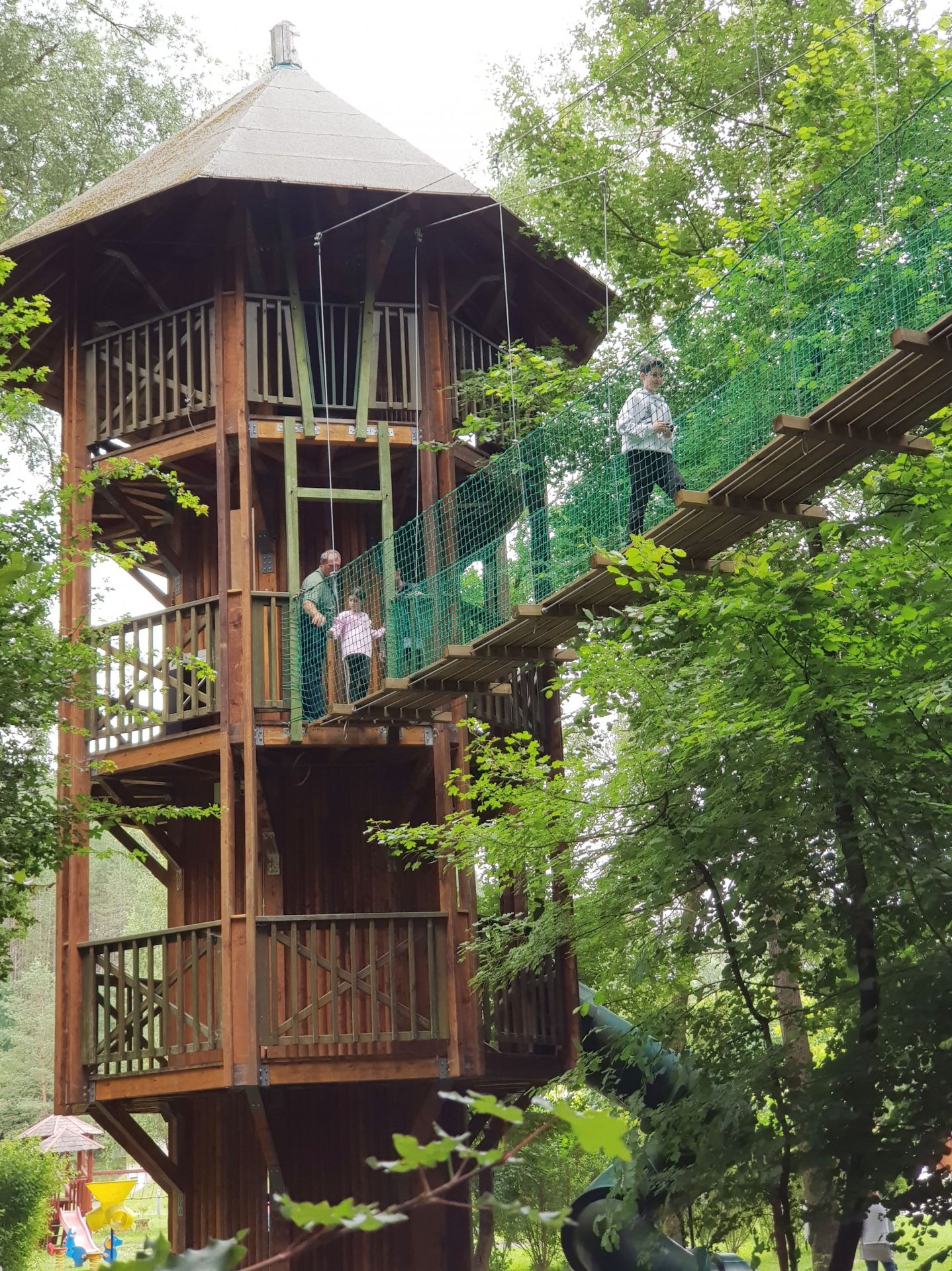
Az ösvény nyomvonalán nem csupán a lombkorona élővilágával ismerkedhetnek meg, de a kihelyezett QR kódos táblák és egy mobil applikáció segítségével a hangukat hallató erdőlakókkal, nemszeretem állatokkal is lehet találkozni. Ráadásként az érkező torony több szintjén játékos feladványokban gazdag magyar-szlovák-angol nyelvű természetismereti táblák is leköthetik a kirándulók figyelmét.
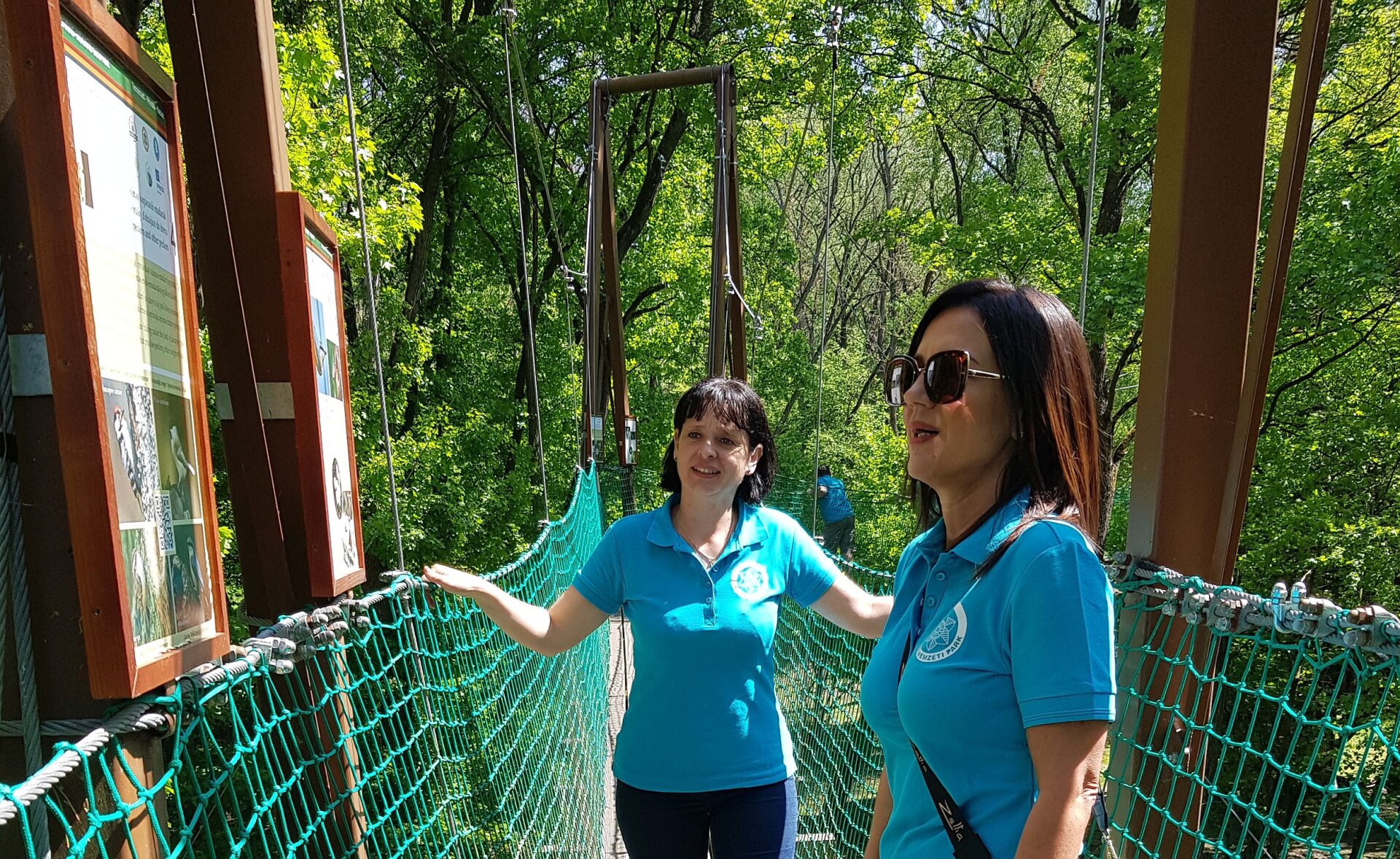
A játszótér melletti 3 emeletes indítótorony legalsó szintjéből csőcsúszda vezet le a talajlakókhoz.
Miocén erdő
A fogadóépülettől a geológiai tanösvény bejáratáig vezető kőzetparki ösvény melletti 4 hektáros területen arborétum várja a látogatókat. A miocén erdőben a 17 millió évvel ezelőtti miocén kor flórájának jelenkori leszármazottjai és ősállatreprodukciók között vezet az út.
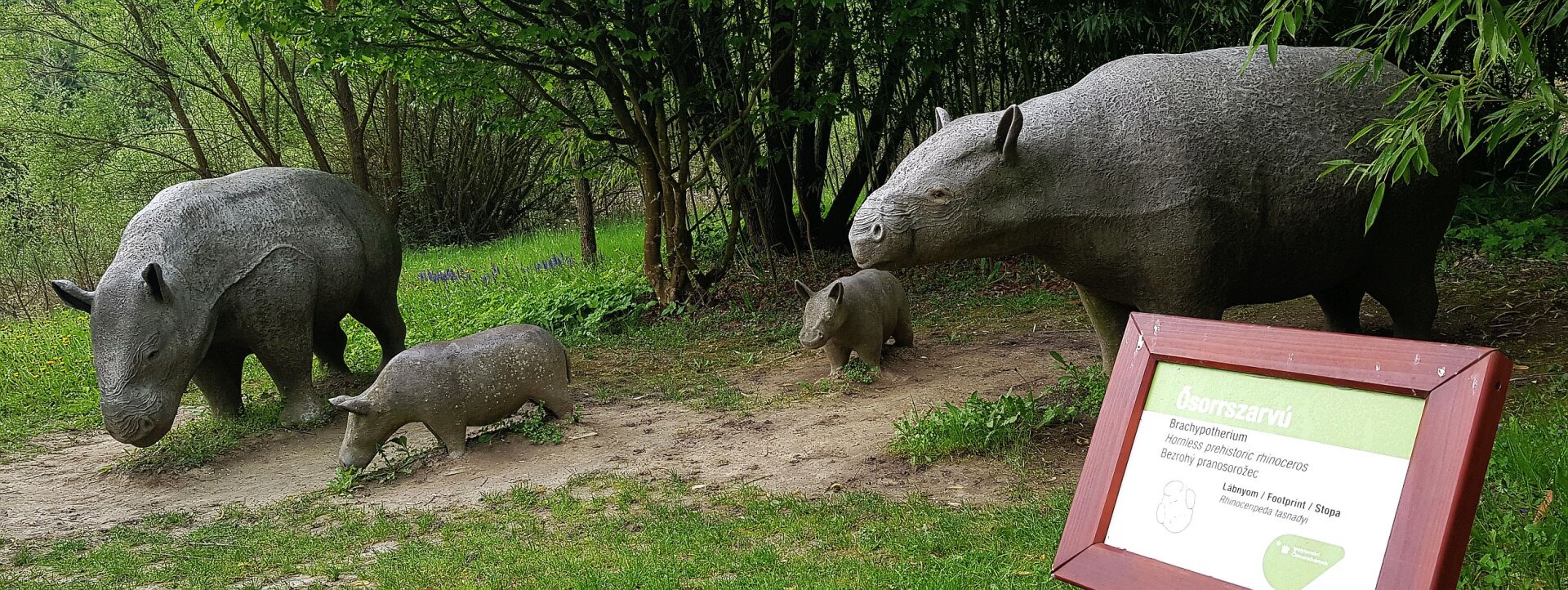
Az arborétum közepén egy építészetileg is igen mutatós, ugyanakkor a tájba harmonikusan illeszkedő melegház található. Itt szenderegnek télen azok a növények, amelyek nyáron még szabadban virulnak. Ilyenek a pálmafélék is, melyek az ipolytarnóci melegebb harmadidőszak karakteres növényei voltak. Az elmúlt 17 millió év kontinensvándorlása sodorta a területet északabbra, a földi klíma, éghajlat is hidegebbé vált, az ősi trópusi, szubtrópusi flóra tovatűnt. Jégkorszakban élünk (állandó jégsapka fedi, még most is bolygónk pólusait), segíteni kell az egykori őshonos növényzetet a téli hónapok átvészelésében.
Kőzetparki Ösvény
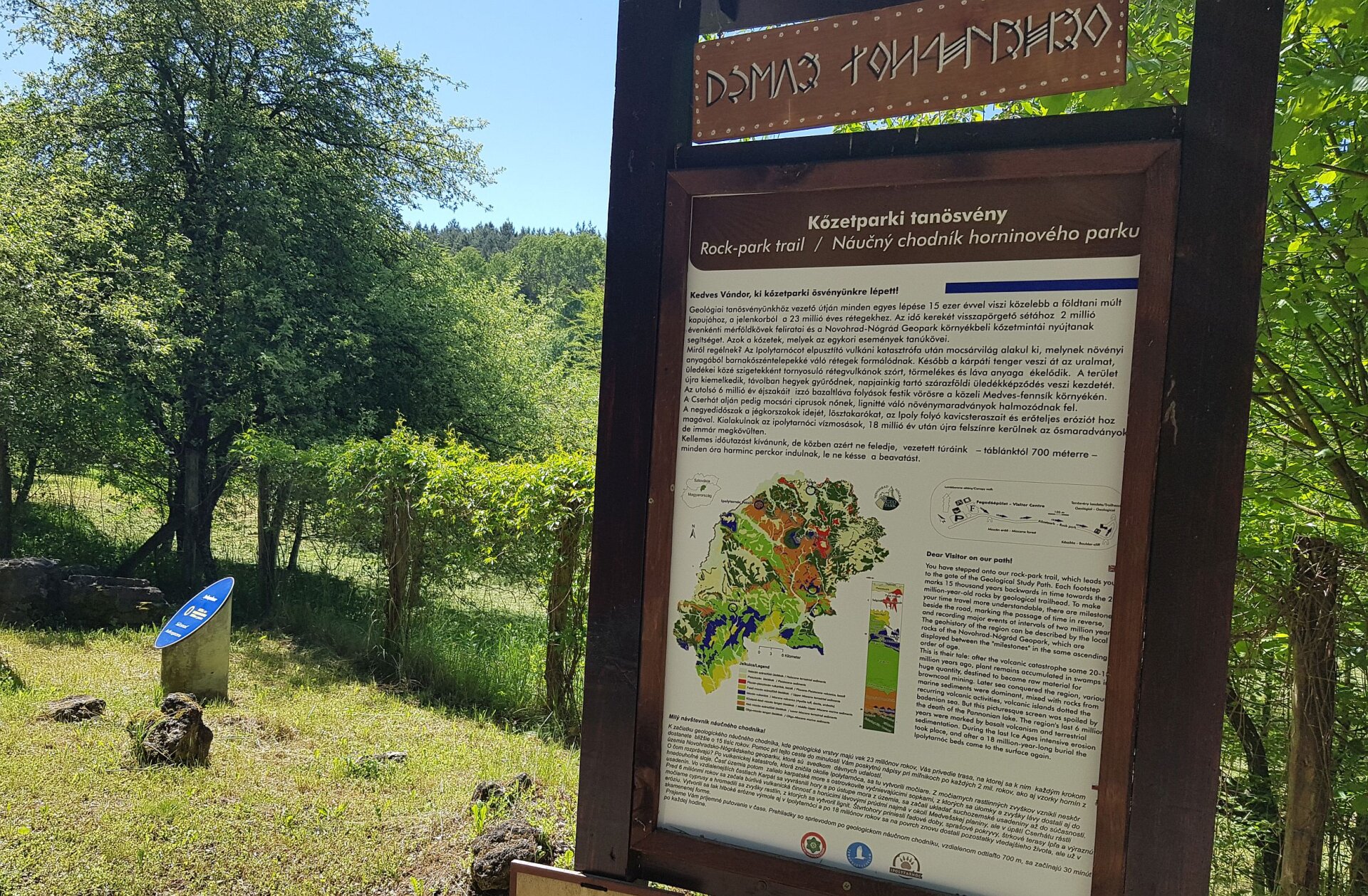
A fogadóépülettől a geológiai tanösvény bejáratáig egy 700 méteres útszakasz, a kőzetparki ösvény vezet el. Minden egyes lépése 15 ezer évvel visz közelebb a geológiai tanösvény bejáratánál levő rétegek korához. Az idő kerekét visszapörgető séta átéléséhez 2 millió évenkénti tanúkövek feliratai és az idősorba illeszkedő környékbeli kőzetminták nyújtanak segítséget. A kőzetparki tanösvény applikációs anyaga itt tölthető le. A kőzetparki tanösvényt közvetlenül ismertető elérés linkje.
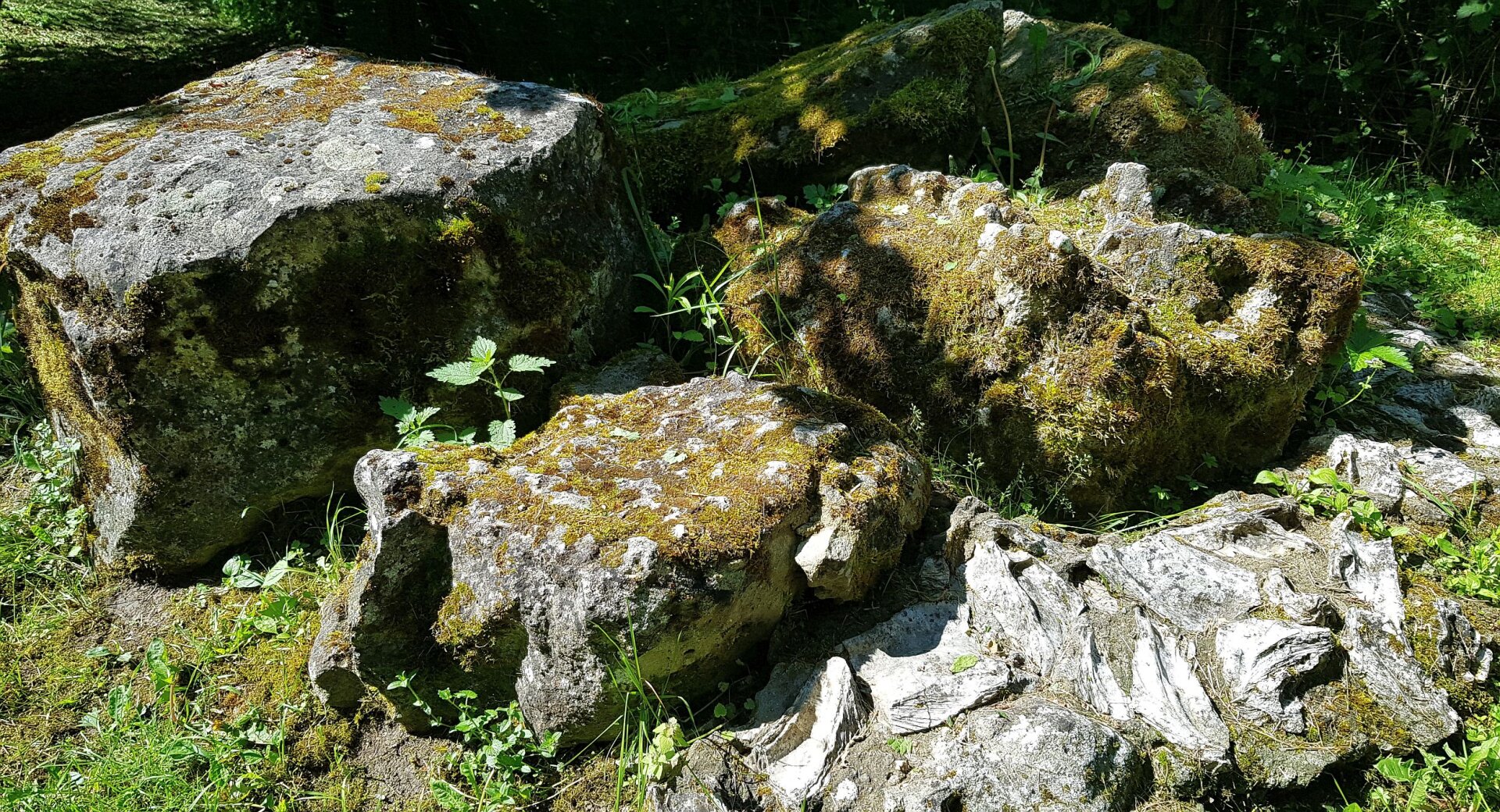
Kőszikla ösvény
A Geológiai ösvénytől 100 méterre, a felső parkoló mellől induló és Botos árokig, majd a Fogadóépületig vezető 4 km hosszú Kőszikla ösvény vízmosások, tanyaromok, kőzetkibúvások és felhagyott kőbányák mentén vezeti látogatóit. Kapaszkodós rész, főképp második szakasza nagyobb felkészültséget igényel, de megéri. A kőszikla tanösvény applikációs anyaga itt tölthető le.
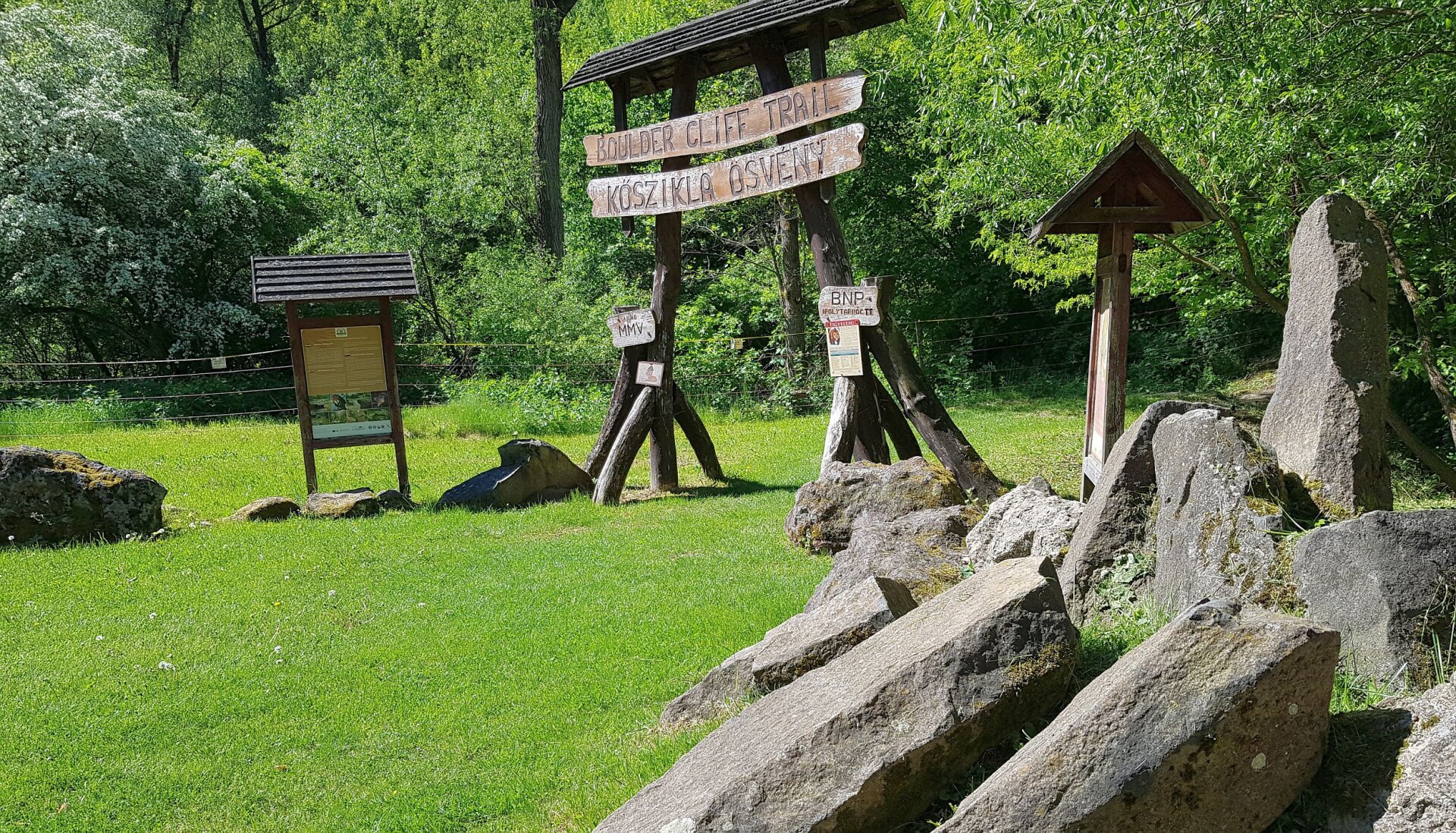
A tanösvények bejárása során ne feledjük, hogy védett területen járunk. A természeti értékek gyűjtése és a képződmények bolygatása tilos!
